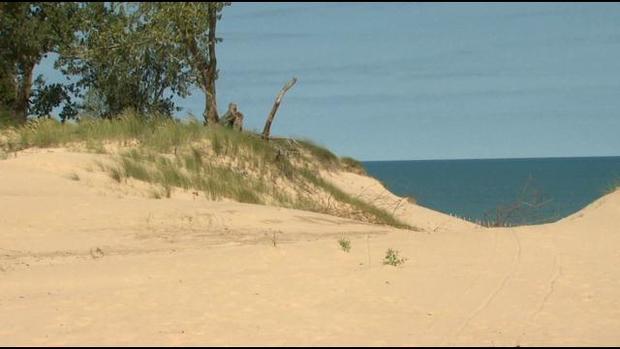More Holes Found Under Mount Baldy
CHICAGO (CBS) -- Geologists investigating the mysterious hole that swallowed a 6-year-old boy last summer have found it's just one of many under the dunes on the Indiana Dunes National Lakeshore.
WBBM Newsradio's John Cody reports Mt. Baldy has been closed since last July, when Nathan Woessner fell into one of the holes, and it collapsed around him, trapping him for more than three hours.
Indiana University geologist Erin Argyilan said Mt. Baldy has been disturbed by sand starvation on the shore, and destabilized by all the visitors who have climbed to the summit over the years.
"There's been so much disturbance at the lakefront. We have a harbor structure at Michigan City that blocks the natural transport of sand to Mt. Baldy, so the system is what we call sand-starved, and when that happens, plus high visitor activity – people running up and down the dune – what you do is you destabilize the vegetation and trees that were here, and the sand begins to move and migrate," she said.
Last week, ground-penetrating radar found three more deep voids under Mt. Baldy. All of them closed up within 24 hours.
"Again, the activity up at Mt. Baldy has been higher, so that's probably why we're seeing and recording more holes. They may have been occurring, but there was no one up here to see them," Argyilan said.
Biologists believe a fungus has been eating away trees buried under the migrating dunes, leaving behind voids like the one that swallowed Woessner on July 12, 2013.
"If there were not a harbor structure, and there were not people on the dunes, this would be a stabilized landscape, with plants and trees, and we wouldn't have an issue of a moving dune," Argyilan said.
Mt. Baldy remains closed to visitors, and trail that led to the summit has been rerouted to prevent it from migrating further inland, according to the National Park Service.




